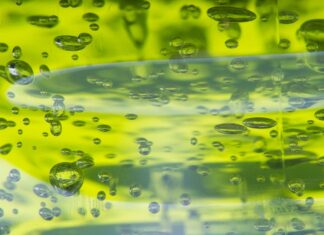Irish Moss, Irish Moss, Irish Moss; this remarkable seaweed, scientifically known as Chondrus crispus, has deep-rooted historical and cultural significance, along with a wide range of applications in various industries. Hailing from the pristine waters of the North Atlantic, Irish Moss has been harvested and utilized for centuries, primarily for its culinary and medicinal properties. However, its importance extends far beyond the kitchen and apothecary, as Irish Moss plays a significant role in fields such as agriculture, cosmetics, and even scientific research.
Irish Moss, often referred to as “carrageen moss” due to its rich content of carrageenan, is a type of red algae that thrives along the rocky coasts of the North Atlantic Ocean. It is native to regions such as Ireland, Scotland, and the eastern coast of North America. This seaweed’s botanical name, Chondrus crispus, derives from the Greek words “chondros” (meaning cartilage) and “crispus” (meaning curled), alluding to its distinctive frilly and reddish-purple appearance.
One of the most renowned uses of Irish Moss is in the culinary world. It has been a staple ingredient in traditional Irish and Scottish cooking for centuries, particularly in the preparation of a nutritious and comforting dessert known as “Irish Moss pudding.” To create this delicacy, the seaweed is carefully cleaned, soaked, and then simmered to extract its natural gelling properties. The resulting gel is mixed with milk, sugar, and flavorings to produce a creamy and soothing pudding.
Irish Moss, often referred to as “carrageen moss” due to its rich content of carrageenan, is a type of red algae that thrives along the rocky coasts of the North Atlantic Ocean. It is native to regions such as Ireland, Scotland, and the eastern coast of North America. This seaweed’s botanical name, Chondrus crispus, derives from the Greek words “chondros” (meaning cartilage) and “crispus” (meaning curled), alluding to its distinctive frilly and reddish-purple appearance.
One of the most renowned uses of Irish Moss is in the culinary world. It has been a staple ingredient in traditional Irish and Scottish cooking for centuries, particularly in the preparation of a nutritious and comforting dessert known as “Irish Moss pudding.” To create this delicacy, the seaweed is carefully cleaned, soaked, and then simmered to extract its natural gelling properties. The resulting gel is mixed with milk, sugar, and flavorings to produce a creamy and soothing pudding.
Beyond its culinary applications, Irish Moss has been celebrated for its potential health benefits. Traditional herbal medicine has recognized this seaweed’s medicinal properties for centuries, with various cultures incorporating it into remedies for ailments ranging from respiratory issues to digestive disorders. The key to its therapeutic potential lies in its rich content of carrageenan, a type of polysaccharide with remarkable properties.
Carrageenan, the polysaccharide found abundantly in Irish Moss, is known for its gel-forming and stabilizing abilities. In medicine, this substance has been used to create soothing syrups for coughs and sore throats, as well as to provide relief for digestive discomfort. Its gel-like consistency is thought to help coat and protect mucous membranes, making it a natural choice for soothing irritated tissues.
In the realm of skincare and cosmetics, Irish Moss and its carrageenan content have also made significant inroads. The substance’s ability to form stable gels has led to its use as a thickening and emulsifying agent in a wide range of beauty products, including lotions, creams, and shampoos. Its natural origin and skin-friendly properties have made it an appealing choice for manufacturers seeking to enhance the texture and performance of their formulations.
The versatility of Irish Moss extends to the agricultural sector, where it has been used for centuries as a soil conditioner. When applied to the soil, Irish Moss can help improve its water retention, nutrient content, and overall structure. This makes it a valuable addition to agricultural practices, especially in regions with challenging soil conditions. In addition to its soil-enhancing properties, Irish Moss can also be used as a natural fertilizer due to its nutrient-rich composition, further supporting plant growth.
In recent years, the applications of Irish Moss have expanded into the field of biotechnology and scientific research. Scientists have been drawn to its unique properties, particularly the carrageenan it contains. Carrageenan has been studied for its potential applications in various industries, including pharmaceuticals, as a drug delivery system, and in the development of novel medical materials.
Moreover, Irish Moss is celebrated for its environmental benefits. As a seaweed, it plays a role in marine ecosystems by providing habitat and food for various marine organisms. Additionally, its cultivation can have positive effects on the environment. Seaweed aquaculture, including the farming of Irish Moss, is considered an eco-friendly practice because it does not require the use of freshwater, fertilizers, or pesticides, which are often associated with traditional agriculture. This sustainable approach aligns with the growing global focus on environmentally friendly and regenerative agricultural practices.
While Irish Moss has a storied history and a multitude of applications, it is essential to acknowledge some of the challenges and controversies associated with its use. One such concern revolves around the sourcing and sustainability of Irish Moss. Overharvesting of wild Irish Moss populations has raised concerns about the impact on coastal ecosystems and the need for sustainable harvesting practices. Efforts are being made to promote responsible harvesting and the cultivation of Irish Moss to mitigate these concerns.
Additionally, carrageenan, the extract derived from Irish Moss, has been the subject of ongoing debates regarding its safety for human consumption. Some studies and advocacy groups have raised concerns about potential health risks associated with carrageenan, particularly in its degraded form. However, regulatory authorities such as the U.S. Food and Drug Administration (FDA) have generally recognized food-grade carrageenan as safe when used in accordance with established regulations.
In conclusion, Irish Moss is a multifaceted natural resource with a rich history and a wide range of applications. From its traditional culinary uses to its role in herbal medicine, skincare, agriculture, and biotechnology, Irish Moss has left an indelible mark on various industries. Its carrageenan content, in particular, has garnered attention for its unique properties and potential applications. As society continues to prioritize sustainability and eco-friendly practices, the cultivation and responsible harvesting of Irish Moss represent a promising path toward a more environmentally conscious future. However, ongoing research and vigilance are necessary to address concerns surrounding its sustainability and safety, ensuring that the benefits of Irish Moss can be harnessed while minimizing potential drawbacks.


















